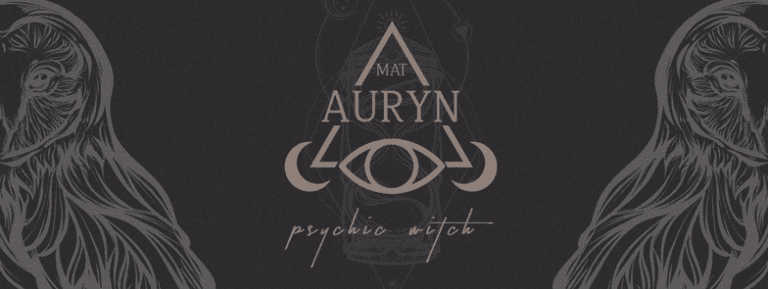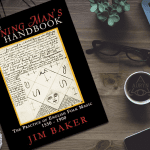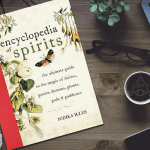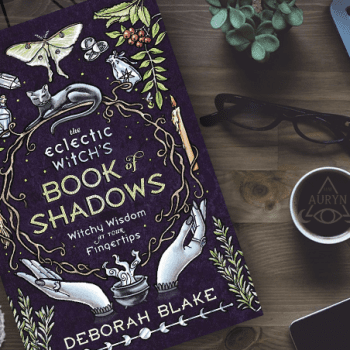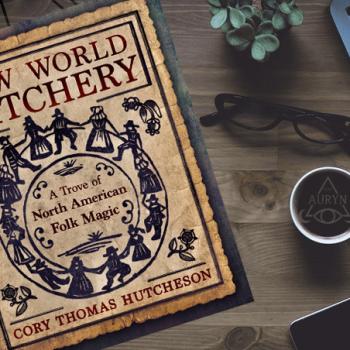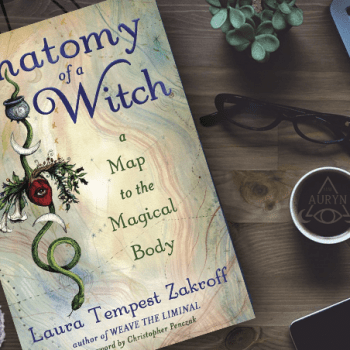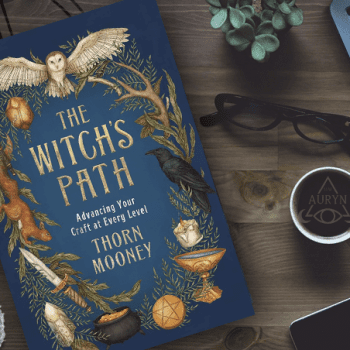Laura Tempest Zakroff can be described as a professional artist, author, dancer, designer, muse, mythpunk, teacher, and witch. Laura has been a practicing Modern Traditional Witch for over two decades and revels in the intersection of her various paths with witchcraft. She blogs at Patheos as A Modern Traditional Witch and at Witches & Pagans as Fine Art Witchery. She is the author of The Witch’s Cauldron, and her second book Sigil Witchery is due out in early 2018. She also writes for The Witches’ Almanac, Ltd.
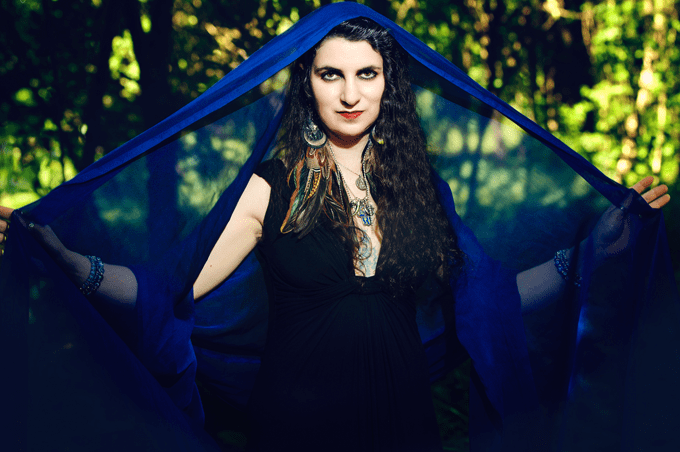
Most of us have had experiences when we were children that pre-shadow our magickal abilities or predisposition? Did you have any experiences like this?
Yes – I still remember dreams I had when I was very young that premonitions of things that came to pass over the years. There were also dreams that were going back in time – especially at the house I grew up in as well as my grandparents’ home. The past experiences didn’t pull from stories I had been told or overheard, but more of a “this is how things were” – some involving my family, and others involving people who had lived in those places before us that I didn’t know. I spent most of my time out in our backyard, communing with nature, talking to the plants and trees, and having discussions with “unseen” beings. As I got a little older, I was absolutely fascinated with all things occult: ESP, ancient ruins and cultures, cryptoids, ghosts, mysteries, etc. Not in an horror/spooky way, but with the feeling that there was more out there than what most people were aware of.
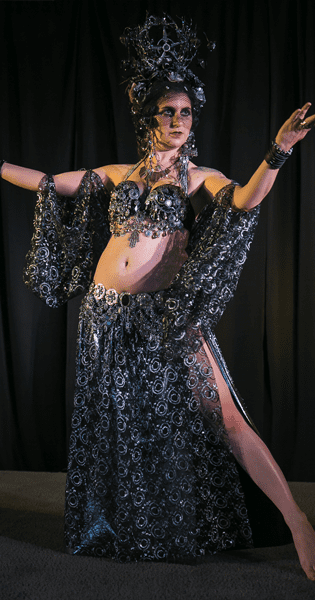
How did you discover witchcraft?
I would say there’s probably two points to mention. My first introduction to witches that I remember best is through the movie The Last Unicorn, which came out in 1982 – just a few years after I myself came into the world. Little me watched that movie a LOT, probably driving the rest of my family nuts. Of course I loved unicorns, but I absorbed many ideas about the use and repercussions of magic as well. Mommy Fortuna is definitely an iconic witch ingrained in my memory – and well, Schmendrick too of course for other reasons. It really covers so much: imposing your will on others, good intentions with negative effects, the power of intent itself.
Growing up Catholic (with a Jewish father), my exposure to the world regarding religions and other paths though was mainly there’s the Judeo-Christian paths, the religions of far-off peoples, and everything else was in the past, trampled upon or dominated by Christianity. Which was really tough for me, because I didn’t feel connected to the faith I was raised in. There had to be something else that connected with the earth, nature – and made more sense! In my early teens, I began to discover that people still follow the “old gods” – whether recreated or otherwise. I was wary of the books with the fanciful covers and whimsical titles – so my first book on modern Witchcraft was Margot Adler’s Drawing Down The Moon. That opened up so many possibilities for me now that I had ideas of where to look for more information, and I started to connect with folks online in the early days of the internet (IRC especially.)
You describe yourself as a Modern Traditional Witch. What does this mean to you?
The Modern Tradition is a blending of old and new ways. I am a Traditional Witch in the sense that I pull from folkloric and mythic sources largely from my heritage, that my practice is mostly devoid of ceremonial magic and related structures, and that I view my path as a vocation. The modern aspect refers to the fact that I am a modern Witch, dealing with contemporary issues and approaches. My practice changes depending on where I am living, versus trying to recreate something from the past or a foreign land. I acknowledge the future, present, and the past as connected and fluid – not static.
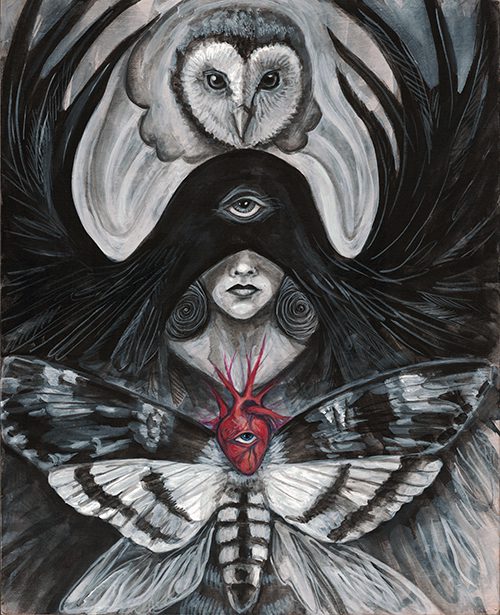
One of the things I love about you is how much your magick is in every aspect of your life, it seems to just flows into all of your projects and creative outlets. What relationship do you see between magick and the arts?
For me, magick and the arts are definitely integrated. In my experience, the ability to create art and to work magick both come from the right brain – the part of us that works in pictures, visualizing the whole and seeing how things are connected, the realm of the creative problem solver. Having trained in fine art for most of my life, creating spellcraft through drawings and paintings comes very naturally to me. Art-making is giving form to ideas, dreams, and visions – much like magick causes changes in the world. Dance, music, visual arts, poems and stories – all of these arts make manifest the invisible, reveal the hidden parts of our worlds.
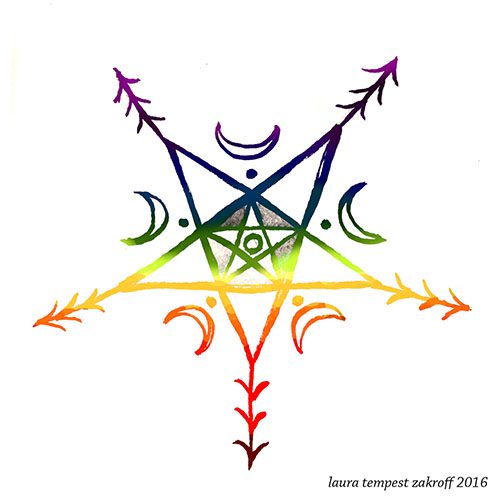
I know you have a book coming out soon on Sigil Witchery. What do you love the most about sigils?
That sigils are condensed spellcraft – all of the ingredients combined and refined to their essential parts to create a visual working. I also love that sigils can be inherently personal and unique, or they can be specifically designed to be used by groups or numerous people for workings – such as the Power Sigil.
What spiritual or magickal practice of yours do you find to be the most transformative as an individual?
Hmmm….that’s a tough choice between dance and art. Through dance, I am creating a unique moment-in-time, that physically flows through my body and interacts with the audience or environment. It can be amazingly profound both as the dancer and for the viewer, yet it’s ephemeral and unique to that moment. It’s so incredibly immediate. Energy is transmitted and everyone is transfixed and transformed by it – including me. Making visual art is transformative for me in the process of making it, because I am exploring new ideas or revisiting old ones – but once it’s done, it’s done. Yet because the art takes permanent physical form, it’s something that can be experienced again and again for the viewer. Every time someone sees that painting or drawing for the first time, there can be that amazing experience for them – and I love to see how different people interpret the same work. It’s really profound to see someone recognize a part of their own mystery in your work.
In your book, the Witch’s Cauldron you discuss a multitude of uses for the cauldron, some I never thought of, what are your personal favorite uses?
Bathing and tea. In our home, we see the bathtub as a cauldron. It’s part of our everyday magick – for cleansing, for comfort, for introspection – Nathaniel and I love using the bathtub. The tea kettle is also part of our daily ritual, and the different blends I chose can aid me in my day in a multitude of ways – mundane and metaphysical.
After taking one of your workshops and watching you dance, I was really impressed with how you used your body and movement as an ecstatic tool for magick. How did you start incorporating dance into your rituals?
Thank you! Many years ago, when I was running both a large open path group and a household of the tradition in Rhode Island, we collectively got inspired to sign up for bellydance classes – I think at least half a dozen of us total were in class together Pretty soon we were figuring out how to bring those moves and music into our public and private rituals. It wasn’t choreographed formally, but we had an understanding of how to build things up to work the energy throughout the course of a ritual. The more I studied dance and performed it, the more powerful it became. What you see now is the culmination of nearly two decades of study and experience.
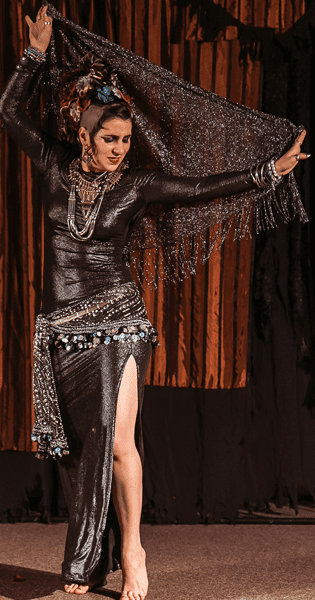
Why is movement important to magick?
If magick is energy, then movement can be a way to manipulate that energy. I like to say, the human body doesn’t make a great battery, but it does make an excellent conduit. By being aware of our body, how it interacts with the ground, air, and everything around us, we can make use of our bodies to shift, change, build and release energy. Movement also helps us connect to the right side of our brains, preventing us from getting too caught up in over-thinking. It’s the difference between just talking about magick and actually physically doing it.
Can someone still effectively use movement in ritual if they have limited mobility?
Yes, very much so. Even those with limited mobility can use movement exercises to engage with their body and the energy around them. If you can visualize the energy and just move part of yourself (like just arms or hands, or your head), it can have a profound effect.
What advice would you give someone who is just starting out on the path of witchcraft?
Trust yourself. That may sound easy, but I find the majority of people have a really hard time with trusting their own intuition and experiences. Far too often, they look to others for approval or affirmation for what they’re experiencing or if they’re doing the “right thing.” Other people have their own agendas and can possibly take advantage of you – or share their own fears and inhibitions. Witchcraft takes guts, a willingness to challenge realities, and the ability to watch, listen, and speak with power. Hard to do any of that if you don’t trust yourself.

